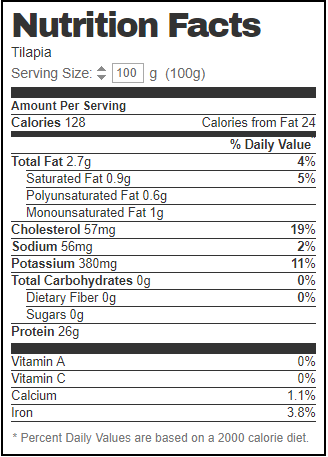
Red Tilapia is a variant bred from the crossbreeding of Nile tilapia and Mozambique tilapia. It gets its name from its bright body colors (such as pink, orange - red, and orange). It has the characteristics of fast growth, tender meat, and no black membrane in the body cavity. Its breeding originated in Israel, and now large - scale farming is carried out in countries such as China, Vietnam, Thailand, and the Philippines. Since its introduction to China in 1973, China has become an important global tilapia producer. Places like Hainan and Maoming in Guangdong are the main producing areas, and the tilapia products are mainly exported in the form of frozen tilapia fish fillets and whole tilapia fish.
Characteristics and Distribution of red tilapia Export Markets
US Market: A traditional major consumer, significantly affected by tariffs
Demand and Categories: The United States is the largest importer of red tilapia, mainly purchasing frozen fillets and whole fish. In 2024, China's export value of tilapia to the United States reached 389 million US dollars, of which red tilapia accounted for about 15% - 20%. American consumers prefer its high protein content and non - thorny feature, and it is often used as a raw material for fast food or family ingredients.
Tariff Challenges: In 2025, the US tariff on Chinese tilapia may increase from 25% to 45%, leading to a decline in China's export volume. Countries such as Vietnam have taken the opportunity to seize the market share. For example, Vietnam's export value of red tilapia to the United States reached 13 million US dollars in 2024, an increase of 20% year - on - year.
African Market: Surging demand, driven by cost - effectiveness
Consumption Preferences: Many African countries regard red tilapia as a major source of protein. Côte d'Ivoire, Burkina Faso and other countries are core buyers of China's frozen whole red tilapia. In the first 9 months of 2024, China's export value of red tilapia to Côte d'Ivoire increased by 7%, and to Burkina Faso by 31%.
Price Advantage: The price of China's frozen whole red tilapia is 10% - 15% lower than that of Vietnam, and its specifications (mainly 300 - 500 grams) meet the consumption needs of African families. From January to May 2025, the export volume of Hainan to Africa increased by 159% year - on - year.
EU Market: High - endization and sustainable certification
Quality Threshold: The EU has strict requirements on drug residues and breeding environment. Chinese enterprises need to obtain BAP (Best Aquaculture Practices)certification. The red tilapia products of Blue Sea has entered more than 50 EU countries with the label of "anti - free breeding". In the first 4 months of 2025, Hainan's aquatic product exports to the EU increased by 56.2%, with red tilapia accounting for more than 60%.
Processing Trend: The EU market prefers deep - processed products (such as seasoned tilapia fish fillets and tilapia fish fillets). The average export tilapia price of China is about 4.5 US dollars per kilogram, which is 30% higher than that of whole tilapia fish.
RCEP Member States: Release of regional trade dividends
Tariff Reduction: After the entry into force of RCEP, China's export tariff on red tilapia to countries such as Malaysia and Singapore has been reduced from 5% to 0 - 2.5%. From 2018 to 2023, Malaysia, Singapore, and Thailand accounted for more than 90% of China's exports to RCEP, mainly importing fresh and frozen tilapia fish and deep - processed products.
Segmented Market: Indonesia and South Korea prefer fresh and frozen whole tilapia fish; Myanmar imports live tilapia fish for local breeding; Vietnam and Japan purchase high - end products such as seasoned tilapia fish fillets.
Emerging Markets: Potential in Southeast Asia and the Middle East
Southeast Asia: Vietnam and Thailand have seized the mid - end market through deep processing (such as tilapia fish steaks and tilapia fish balls). In 2024, Vietnam's red tilapia export value reached 41 million US dollars, an increase of 138% year - on - year, with the United States and Russia as the main buyers.
Middle East: Due to cultural preferences where red symbolizes auspiciousness in countries such as the United Arab Emirates and Saudi Arabia, the demand for red tilapia is strong during festivals. China's frozen whole tilapia fish enters the market through Dubai transit, and the export volume increased by 22% year - on - year in 2024.
Export Competition and Challenges
Rise of Vietnam: Relying on low - cost breeding and tariff advantages, Vietnam's export volume of red tilapia to the United States increased by 300% year - on - year in the first quarter of 2025, and the price is 12% lower than that of China.
Technical Barriers: The EU and the United States require a full - process traceability system for breeding (such as blockchain technology). Some small and medium - sized Chinese enterprises have been forced to withdraw from the high - end market due to high certification costs.
Brand Building: Most of China's red tilapia are exported under the generic name "tilapia". Hainan has launched the "Hainan Snapper" brand in an attempt to increase the premium, but its international recognition still needs to be improved.
Future Trends
Tilapia Product Upgrading: The proportion of deep processing will increase from the current 35% to 50% in 2025. Prepared dishes (such as rattan pepper grilled tilapia fish and chopped pepper tilapia fish head) will become growth points. Enterprises in Maoming and other places have launched low - fat and high - protein ready - to - eat products targeting the European and American markets.
Sustainable Development: BAP certification and carbon footprint labels have become necessary conditions for entering the EU. Chinese enterprises need to increase the application of technologies such as recirculating aquaculture and probiotic feed.
Red tilapia Market Diversification: The growth rate of emerging markets such as Africa and the Middle East is expected to reach 15% per year. Enterprises can directly connect with small and medium - sized purchasers through cross - border e - commerce (such as Alibaba International Station) to reduce intermediate costs.
The export market of red tilapia presents a pattern of "steady but worrying traditional markets and potential to be tapped in emerging markets". China needs to make efforts in quality control, brand marketing, and regional trade cooperation to cope with the dual challenges of Vietnam's competition and tariff fluctuations.

Red tilapia fish, china red tilapia fish supplier, producer, red tilapia exporter, red tilapia manufacturer, seafoods supplier, red tilapia gutted and scaled













